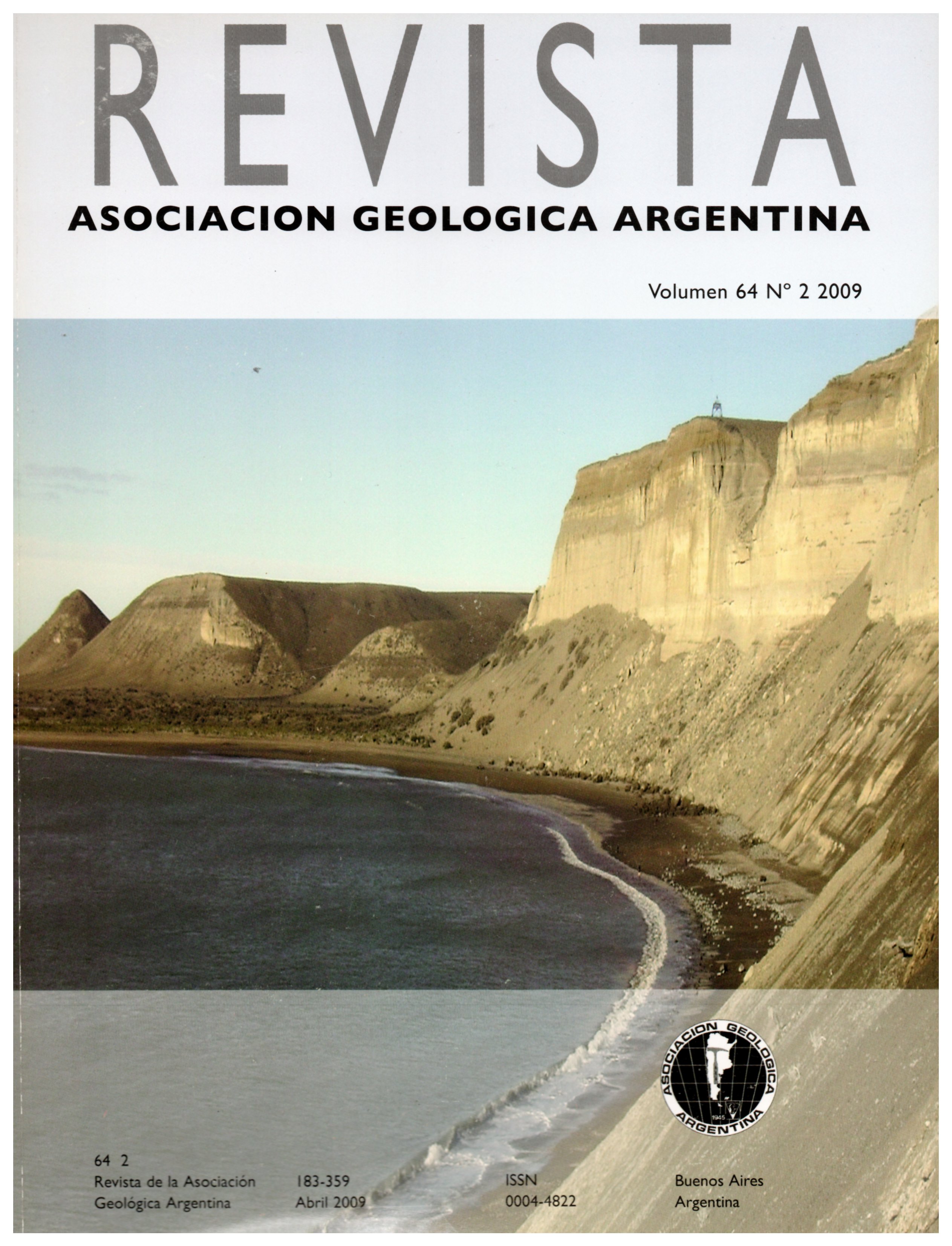Mineralogical Characterization Of Topaz From Miarolitic Pegmatites And W-Bearing Greisen In The A-Type El Portezuelo Granite, Papachacra (Catamarca Province)
Main Article Content
Abstract
The El Portezuelo Granite (Catamarca Province, NW Argentina), probably of Late Devonian or Early Carboniferous age, was emplaced at ≤ 2 kbar and displays the chemical characteristics of an A-type granite. It hosts small miarolitic pegmatites and dikes that belong to the NYF petrogenetic family, miarolitic class, miarolitic-REE subclass, with features more similar to those reported for the gadolinite-fergusonite type. Topaz is widespread both in pegmatites and in a W-bearing greisen genetically related to the granite. In pegmatites it occurs as crystals up to over 15 cm long, showing the forms {120} and {041} (dominant), and also {100}, {010}, {001}, {110}, {130}, {230}, {410}, {150}, {340}, {201}, {203}, {011}, {021}, {031}, {111}, {112}, {221}, {223}, and {445}. Crystals are colorless to pale yellow, more rarely brownish or bluish. Electron-microprobe analyses of gemmy crystals from pegmatites and greisen show that topaz is F-rich (between 19.01 and 20.12 wt. % F, most crystals being slightly zoned) and has very low MgO and TiO2 (≤ 0.02 wt.%), low FeO (≤; 0.03 wt.%), and up to 0.10 wt.% CaO. Refractive indices and unit-cell dimensions reflect the F-rich nature of the studied topaz. This occurrence produces the finest crystals yet known from western South America but probably has no economic potencial as gemstock producer.
Article Details

This work is licensed under a Creative Commons Attribution-NonCommercial 4.0 International License.
Nota de copyright
Los autores conservan los derechos de autor y garantizan a la revista el derecho de ser la primera publicación del trabajo licenciado según una licencia de atribución Creative Commons que permite a otros compartir el trabajo con el reconocimiento de la autoría y de la publicación en la que se publicó por primera vez.
Declaración de privacidad
Los nombres y direcciones de correo electrónico introducidos en esta revista se usarán exclusivamente para los fines declarados por esta revista y no estarán disponibles para ningún otro propósito u otra persona.

